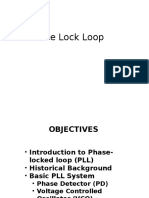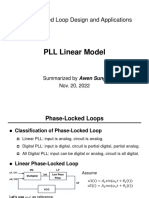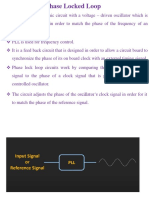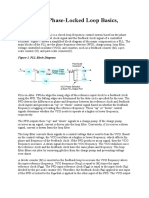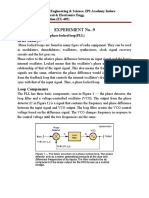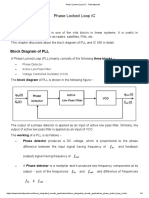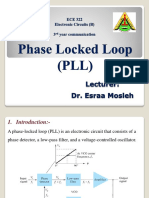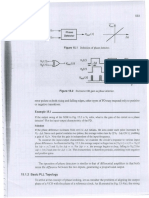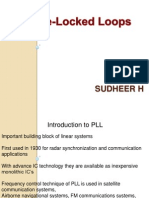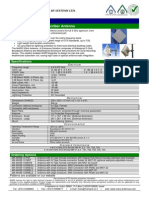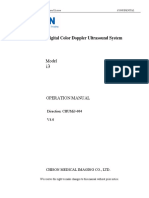0% found this document useful (0 votes)
18 views20 pagesIntroduction To PLL
The document provides an overview of Phase Locked Loop (PLL) systems, explaining their basic structure, functionality, and applications such as frequency modulation and clock skew reduction. It details the components involved, including the Phase Detector and Voltage Control Oscillator, and describes the stages of operation from unlocked to locked states. Additionally, it highlights the importance of PLL in various electronic applications, including frequency synthesis and jitter reduction.
Uploaded by
mmkavin96Copyright
© © All Rights Reserved
We take content rights seriously. If you suspect this is your content, claim it here.
Available Formats
Download as PDF, TXT or read online on Scribd
0% found this document useful (0 votes)
18 views20 pagesIntroduction To PLL
The document provides an overview of Phase Locked Loop (PLL) systems, explaining their basic structure, functionality, and applications such as frequency modulation and clock skew reduction. It details the components involved, including the Phase Detector and Voltage Control Oscillator, and describes the stages of operation from unlocked to locked states. Additionally, it highlights the importance of PLL in various electronic applications, including frequency synthesis and jitter reduction.
Uploaded by
mmkavin96Copyright
© © All Rights Reserved
We take content rights seriously. If you suspect this is your content, claim it here.
Available Formats
Download as PDF, TXT or read online on Scribd
/ 20


